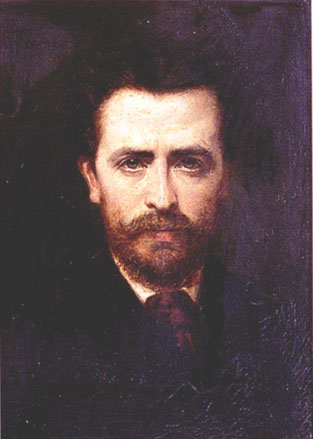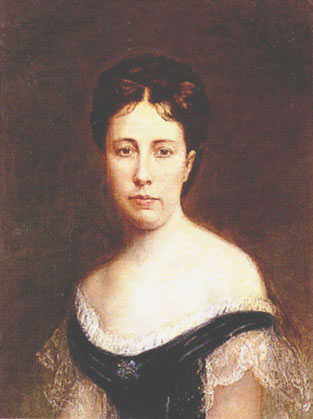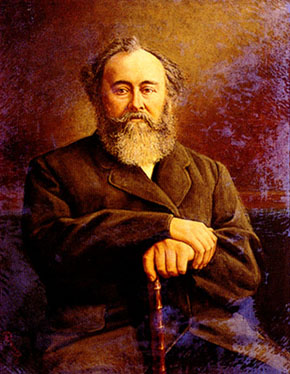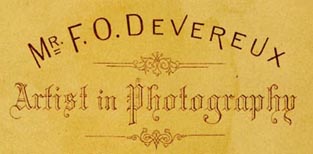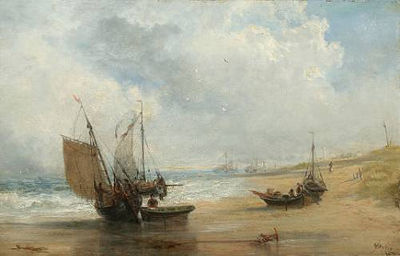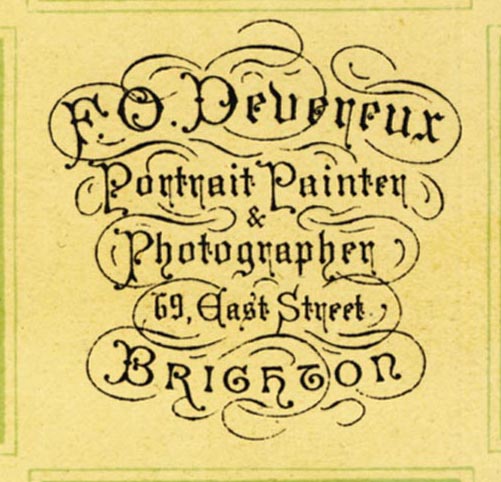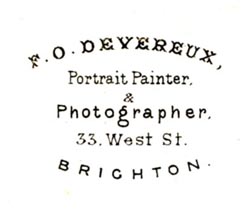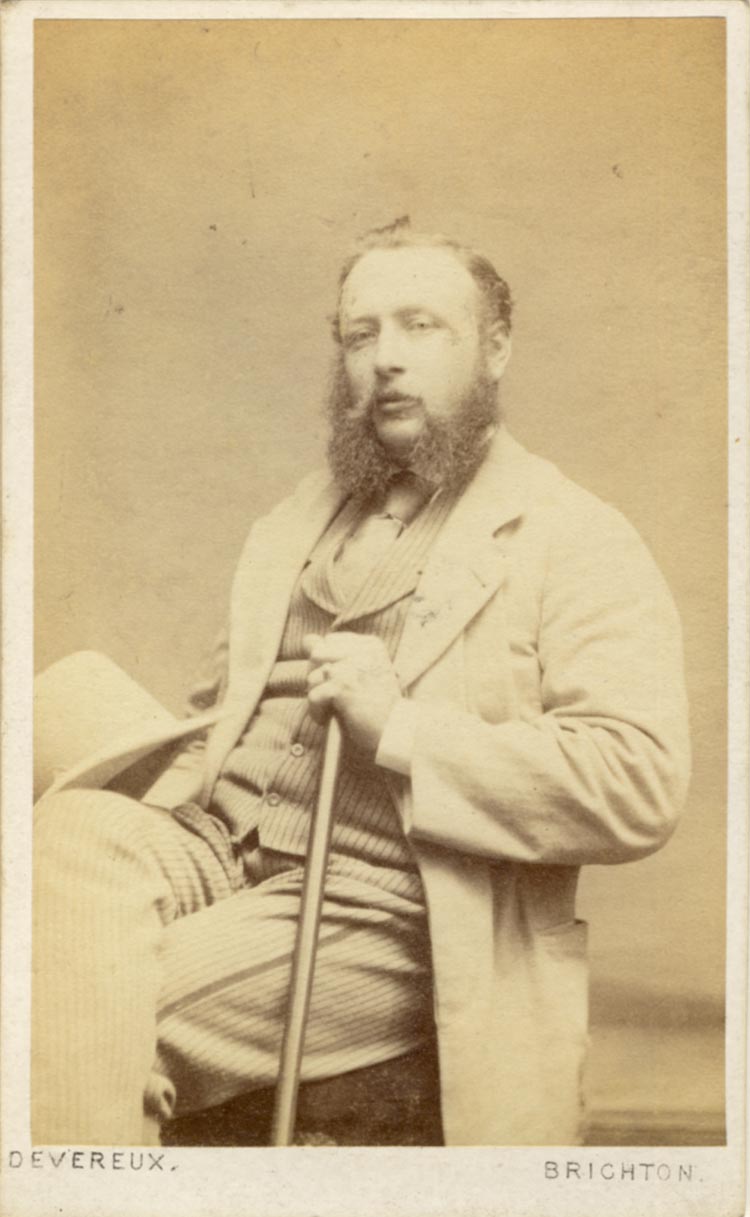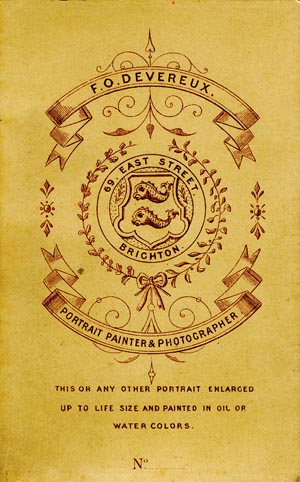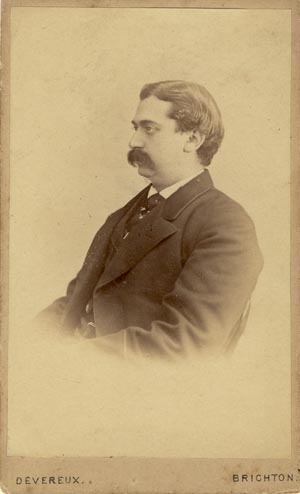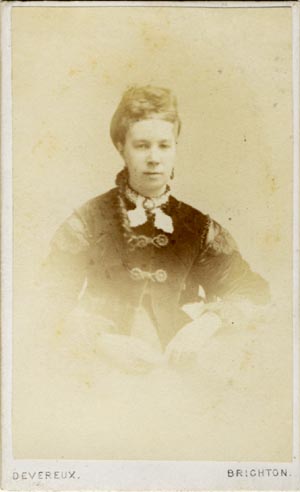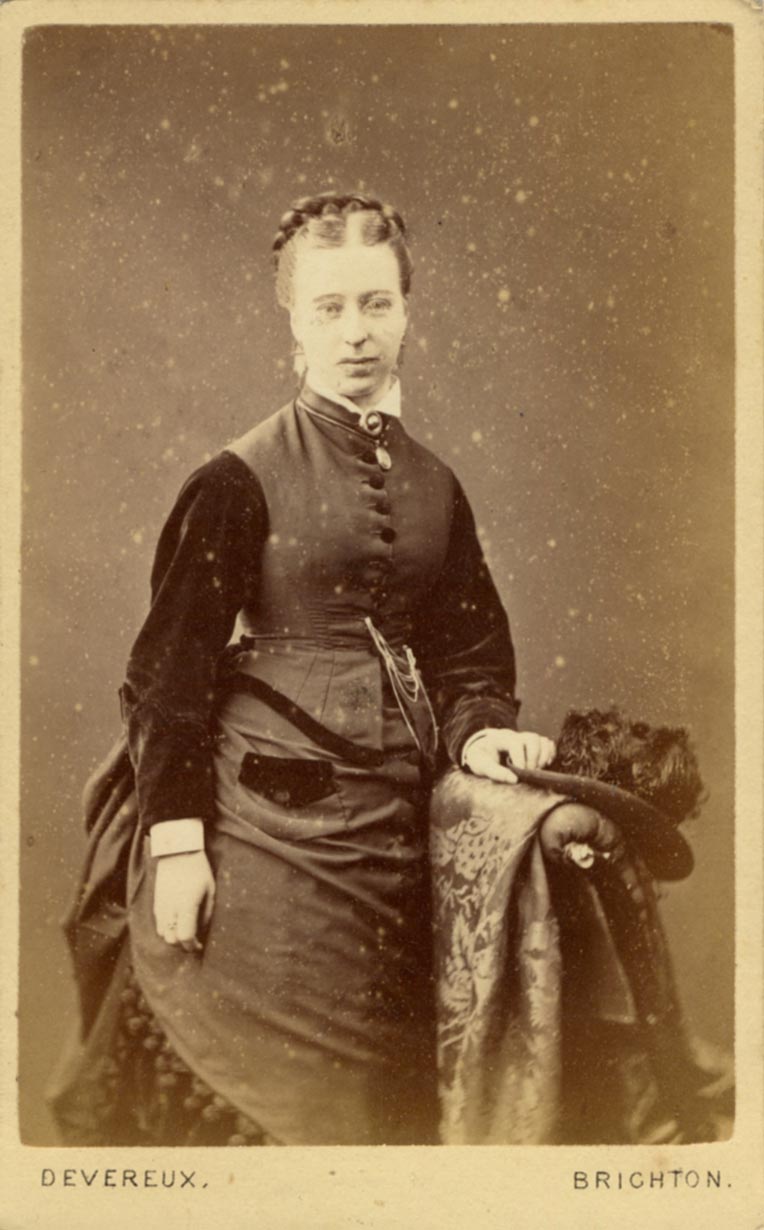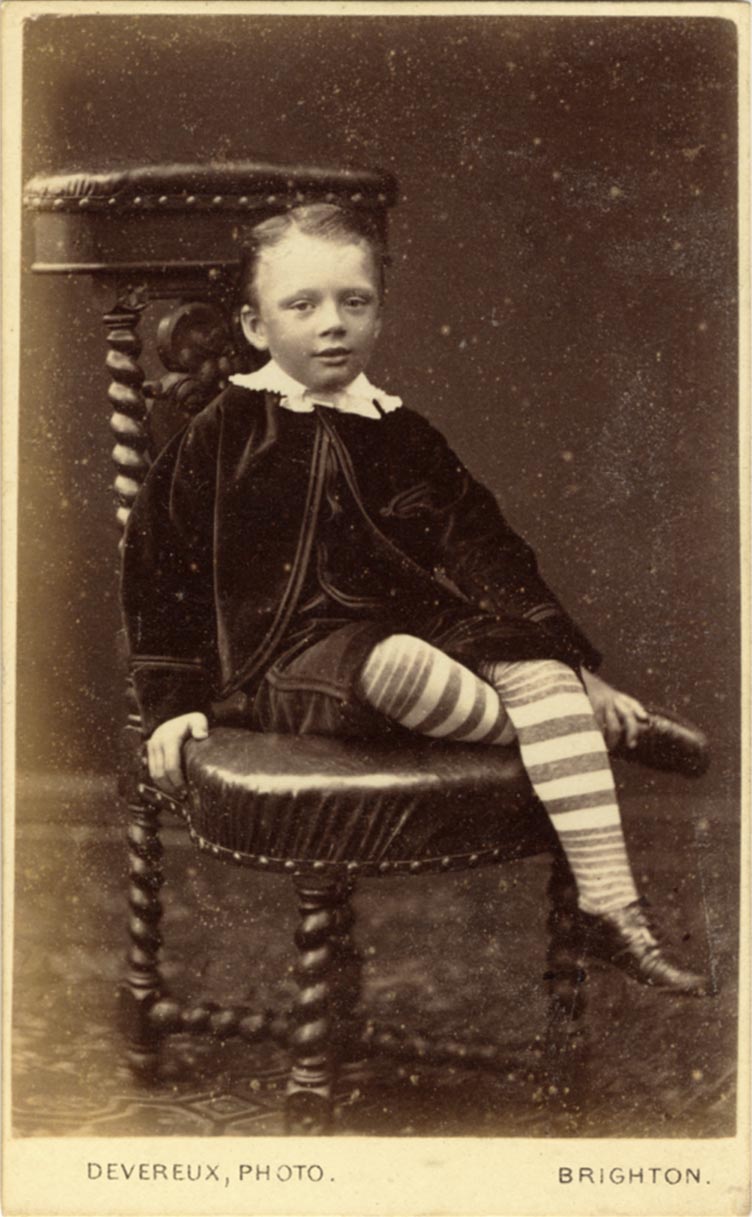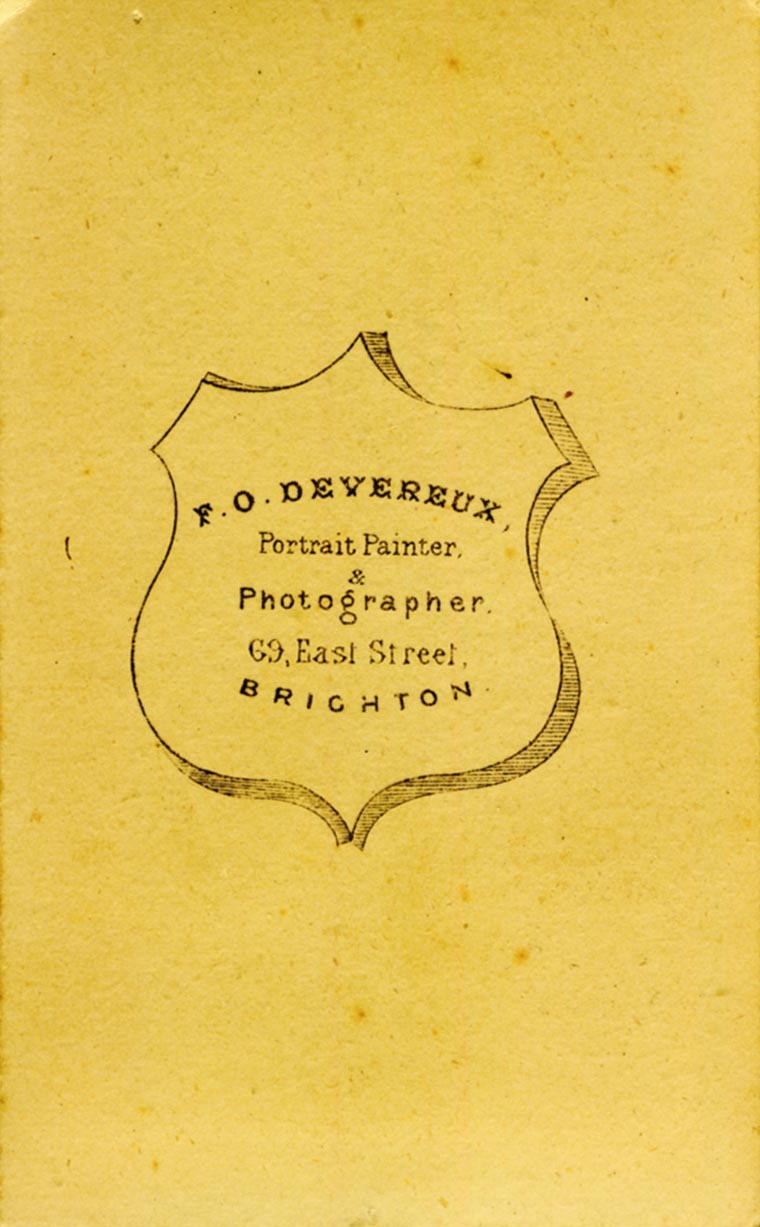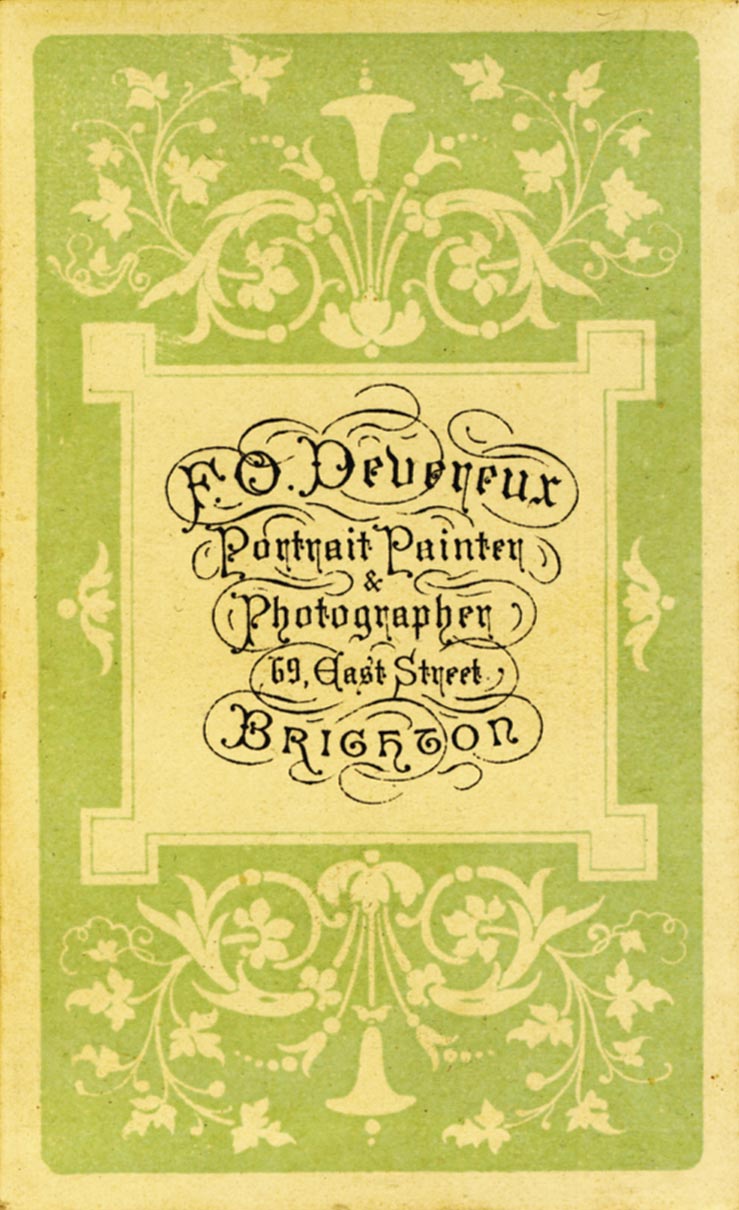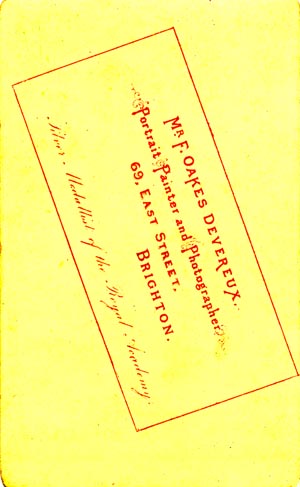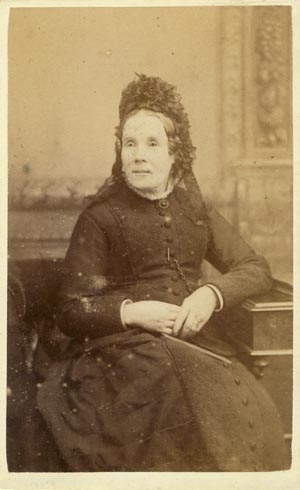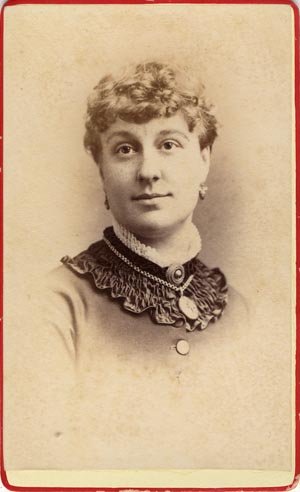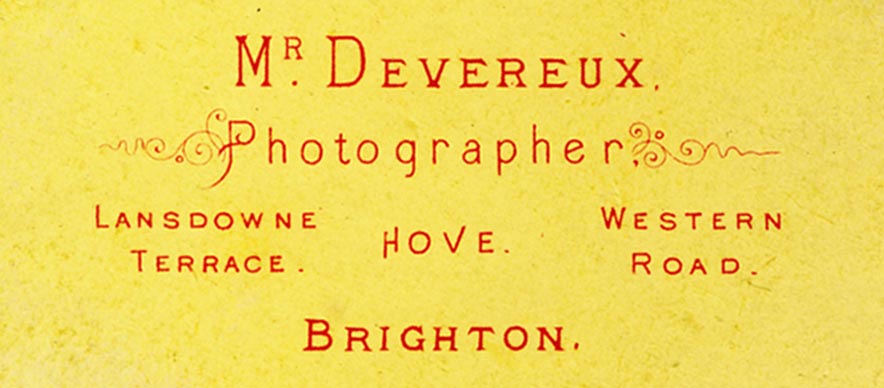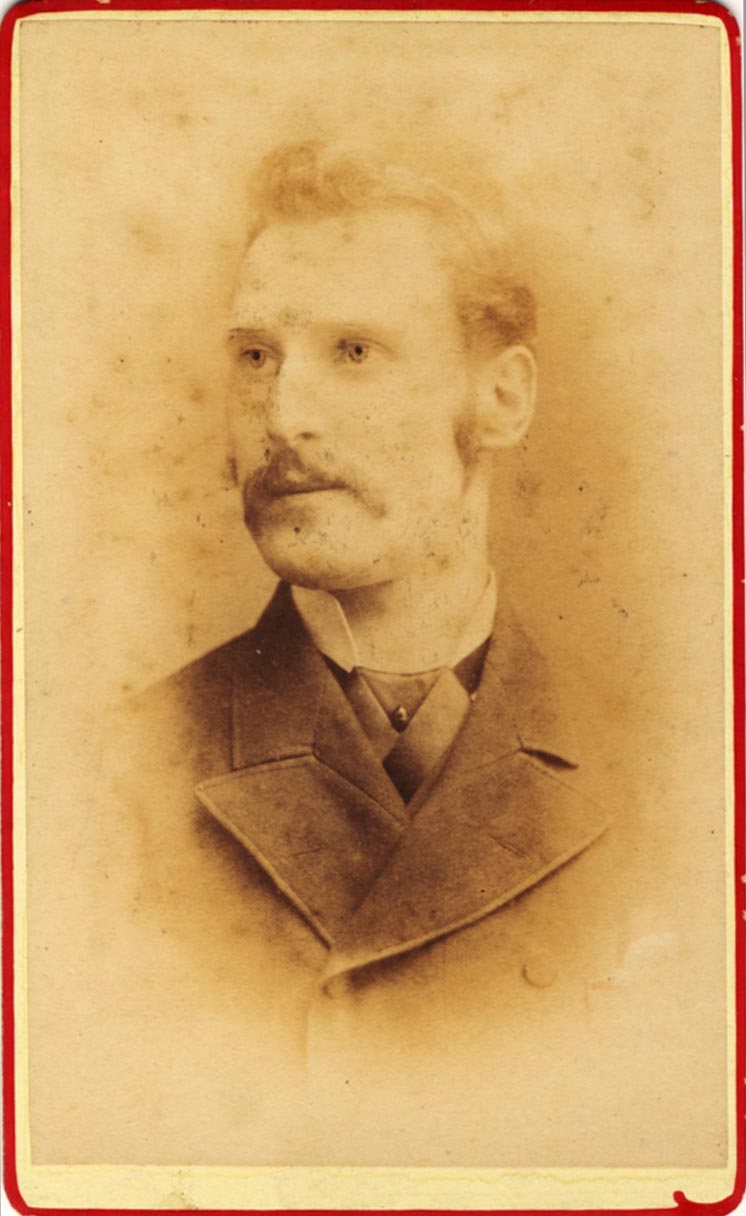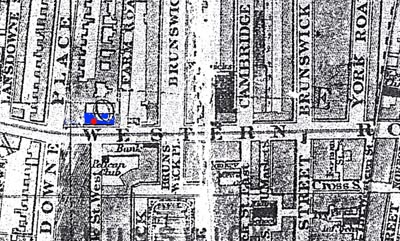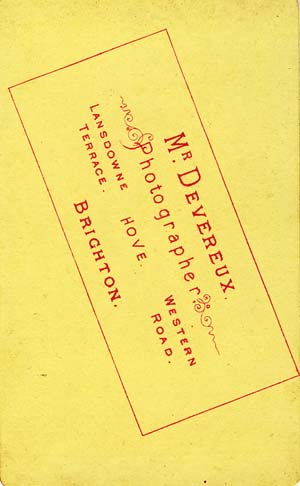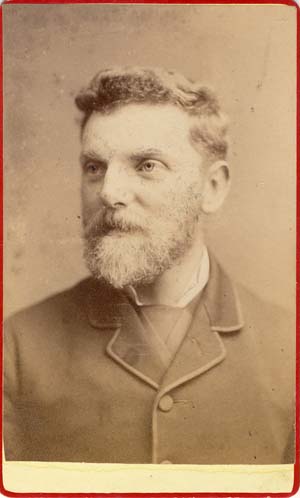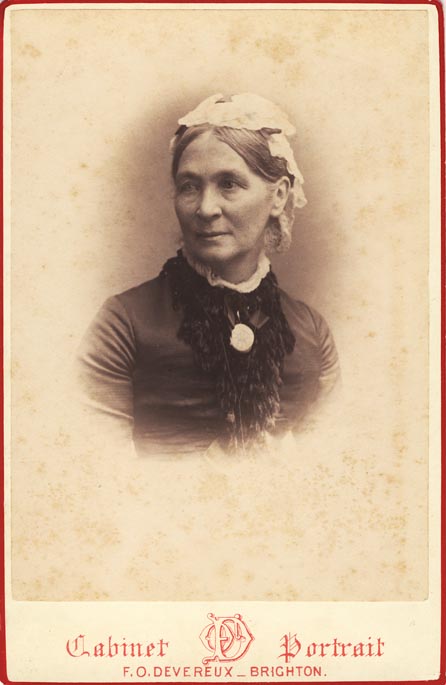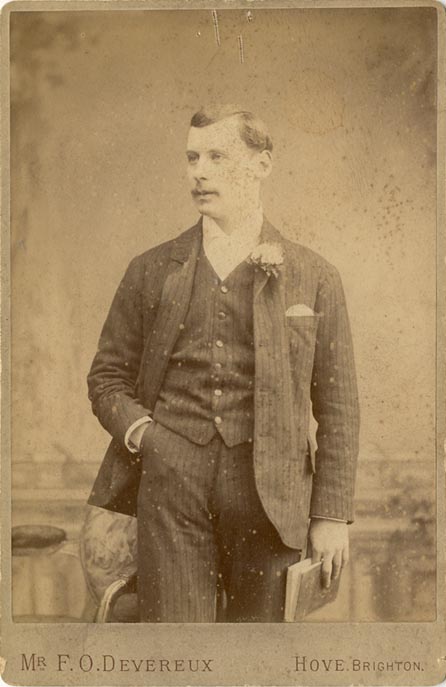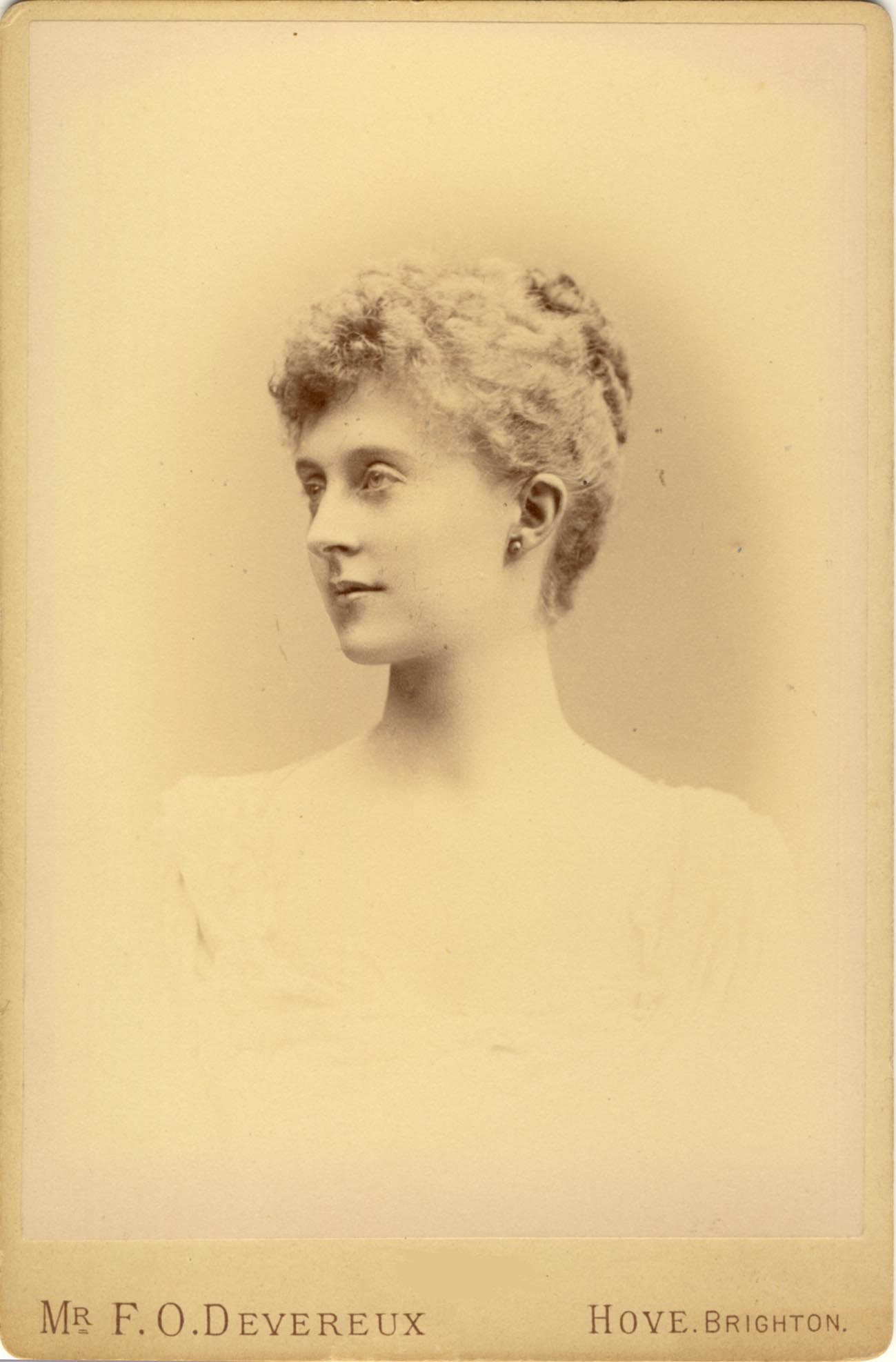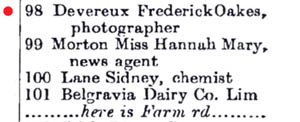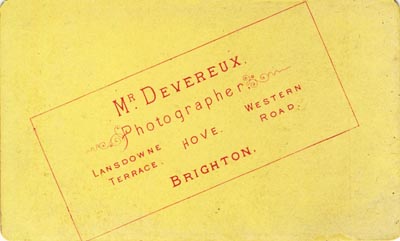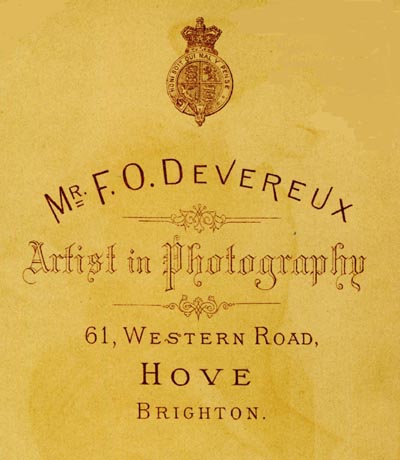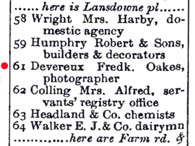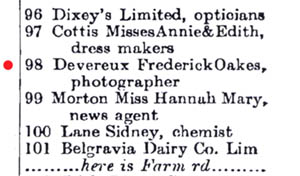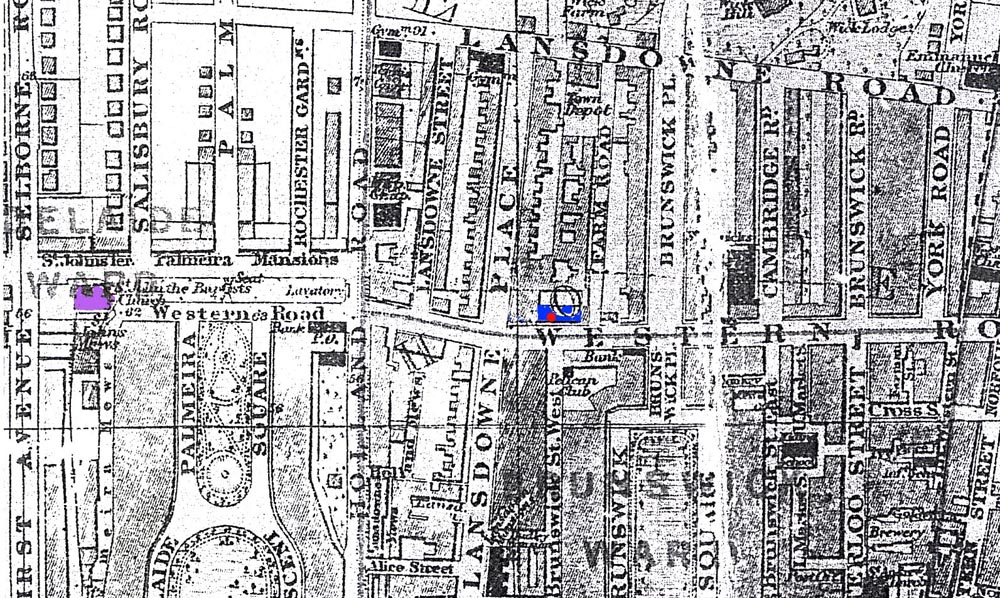|
[ABOVE] Portrait of the Artist. A self portrait by Frederick Oakes (Devereux), signed and dated on the reverse "F. Oakes,1867". (Oil on canvas). Frederick Oakes did not adopt the surname of Devereux until about 1872. [Brighton Museum & Art Gallery]
[ABOVE] Selina, Wife of the Artist. A portrait by Frederick Oakes (Devereux), dated 1870. (Oil on canvas). This portrait was painted the year Frederick Oakes married Mrs Selina Sharman (nee Southwell). This portrait and the self portrait by Frederick Oakes was presented to Brighton Museum and Art Gallery in 1949 by Miss Lucy Sharman, the daughter from Mrs Selina Oakes' first marriage. [Brighton Museum & Art Gallery]
[ABOVE] A portrait of James White M P (1809-1883) by Frederick Oakes Devereux. James White was MP for Plymouth during the period 1857 to 1859. In 1860, White was elected Liberal MP for Brighton and served as the town's Member of Parliament until 1874. The portrait was probably painted after 1872, the year Frederick Oakes adopted the surname of Devereux.
[ABOVE] The trade plate of Frederick Oakes Devereux, Artist in Photography (c1890). Frederick Oakes adopted the surname of Devereux when he became a professional photographer in 1872. |
Frederick Oakes Devereux was born in Liverpool in 1840. His real name was Frederick Oakes and he was the son of Ann and John Wright Oakes of Liverpool. Frederick Oakes was baptised at St Peter's Church, Liverpool on 8th July 1840. John Wright Oakes, Frederick's father, was a distinguished landscape painter and was an associate of a number of eminent Victorian artists, including John Everett Millais (1829-96) and James Abbott McNeill Whistler (1834-1903). John Wright Oakes and his wife Ann (born c1822, Liverpool), a corset maker by trade, produced three children during their marriage. Frederick Oakes was the eldest child and he had two younger sisters - Emily Frances Oakes (born 1842, Liverpool) and Lucy Clementine Oakes (born 1844, Liverpool), who died in the Kensington district of London in 1872 at the age of 28. At the time of the 1851 census, John Wright Oakes and his family were living at 2 Dover Street, Liverpool. On the census return, John Wright Oakes is described as an "Artist & Landscape Painter" and his wife gives her occupation as "Corset Maker".
In 1859, when Frederick Oakes was aged around nineteen, his family moved from Liverpool to London. As a teenager, Frederick Oakes probably received some instruction in the art of painting from his father, John Wright Oakes. However, Frederick Oakes did not become a landscape painter like his father and later worked professionally as a portrait artist. The 1861 census records Frederick Oakes and his family at 28 Victoria Road, Kensington, London. The census enumerator describes the profession of the Head of the household as "Artist - Landscape", while his teenage son is recorded as a "Student Artist", which suggests Frederick Oakes was receiving some formal training at a London art school. By the late 1860s, Frederick Oakes was earning a living as a portrait painter in Brighton. Brighton Museum & Art Gallery has in its art collection two oil paintings by Frederick Oakes; one is a self portrait entitled "Portrait of the Artist", signed and dated on the reverse - "F. Oakes,1867", the other is a portrait of Mrs Selina Oakes and carries the title "Selina, Wife of the Artist, 1870". Frederick Oakes married Mrs Selina Sharman (nee Southwell) at St Nicholas' Church, Brighton on 24th July 1870. Selina Southwell was born on 6th December 1838 in Marylebone, London, the daughter of Elizabeth and William Southwell, a pianoforte maker. Selina was a younger sister of three London photographers - William Henry Southwell (1823-1870), Edwin Southwell (1832-1882) and Frederick Southwell (1833-1883), who together in the early 1860s had formed the successful London photography firm of Southwell Brothers. In 1864, Selina Southwell married Henry Sharman [marriage registered in the district of Chelsea during the Third Quarter of 1864]. A child, a daughter named Lucy Sharman (born 1865, Chelsea), was produced from this union, but it appears that Selina's husband died soon after Lucy's arival in the world. The young widow, together with her infant daughter, travelled down to Brighton, where she went on to marry Frederick Devereux in 1870. When the census was taken on 2nd April 1871, Frederick Oakes and his wife Selina were living at 26 Castle Street, Brighton. Frederick Oakes is described on the census return as an "Artist - Portrait Painter", aged 31. Mrs Selina Oakes, his wife, gives her occupation as "Photographic Colourer", which indicates that she too had some artistic talent and that the couple already had connections with the photographic studios of the town. Lucy Sharman, Selina's daughter from her first marriage, was staying elsewhere in Brighton when the 1871 census was carried out. Frederick Oakes the Portrait Painter becomes F. O. Devereux the Photographer Around 1872, Frederick Oakes established a photographic portrait studio at 33 West Street, Brighton. The studio went under the name of Frederick Oakes Devereux. It was not uncommon for a photographer to adopt a distinguished or artistic sounding name for professional reasons. Henry Hatch of Oxford set up as a photographer in Brighton in the mid 1870s under the name of D'aubigny Hatch. The photographer William Kessler worked under the pseudonym of Eugene de Fontaine at 43A Ship Street, Brighton. The famous film pioneer William Friese-Greene, who owned a studio in Brighton in the 1880s, was born plain William Green. In London, the Irish-born photographer James Stack Lauder worked under the professional name of Lafayette. I do not know precisely why Frederick Oakes decided to adopt the surname of Devereux, but it certainly conveyed an impression of class and quality. [The name "Devereux" is French in origin, deriving from the place-name of Evreux, a town in Normandy. Originally spelt "D'Evreux", the name entered England at the time of the Norman Conquest in the 11th century. The name was associated with the most powerful Anglo-Norman families in England and Ireland and was the family name of the Viscounts of Hereford and the Earls of Essex - most notably Robert Devereux, the Second Earl of Essex.]
|
